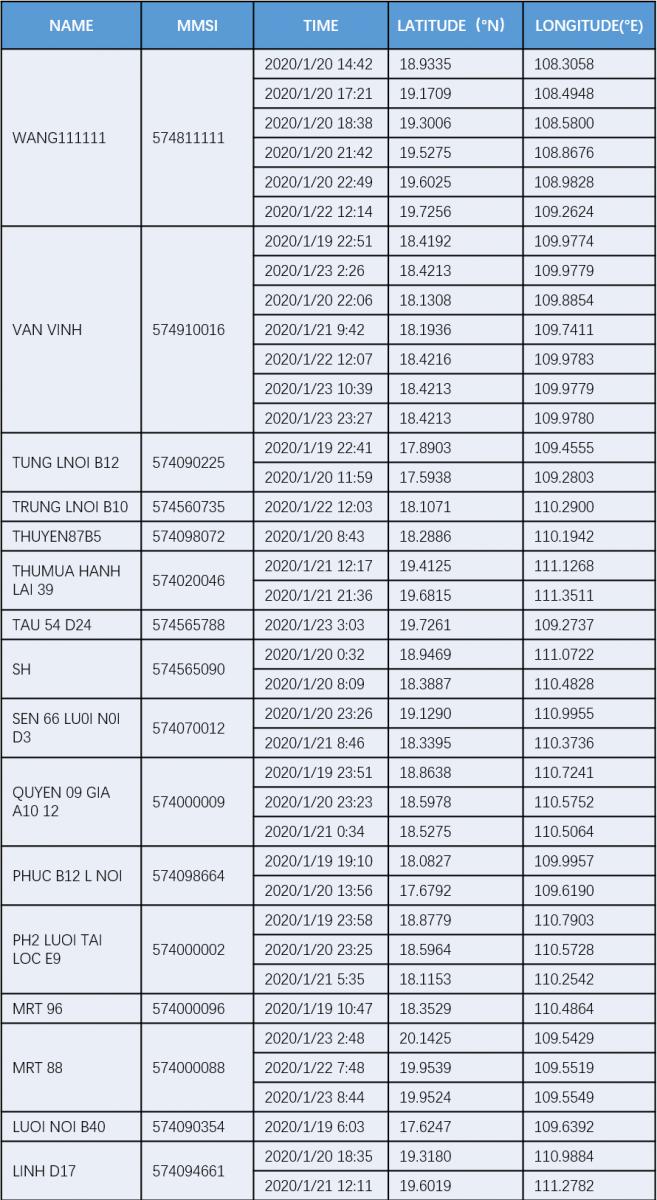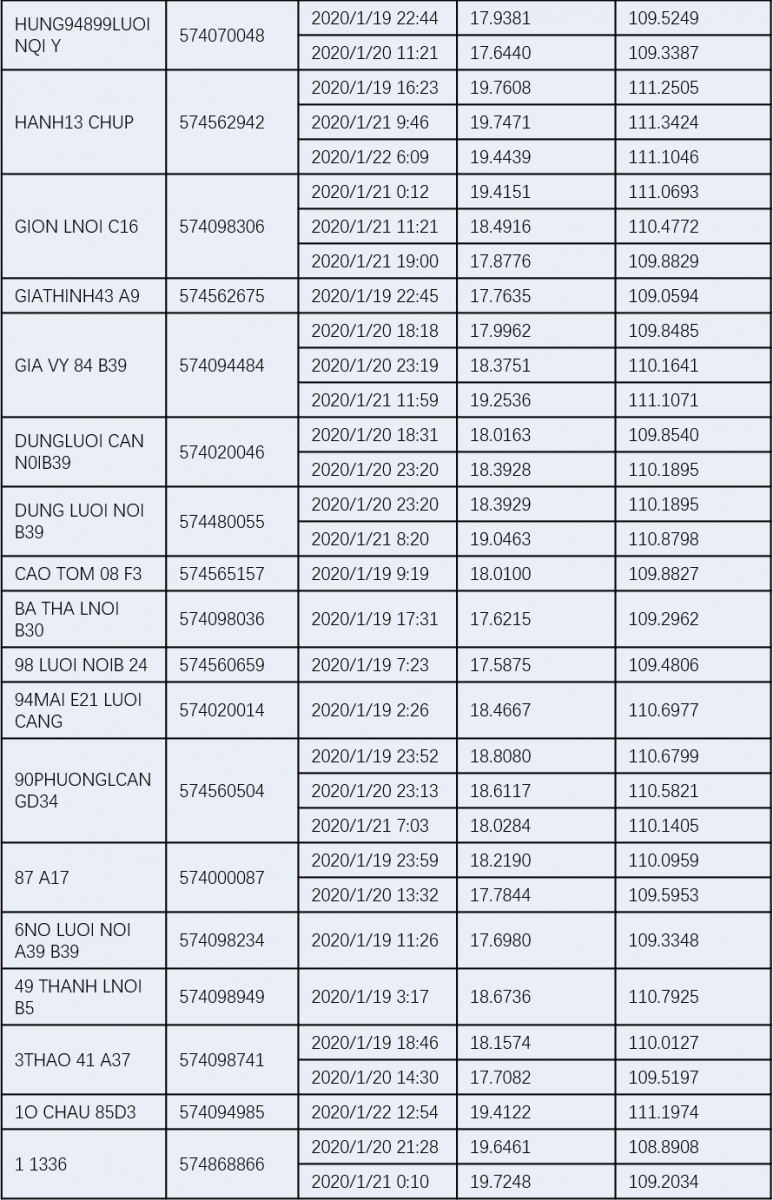For most Chinese people and a larger part of the international community, it might be shocking to hear that Vietnamese fishing vessels intrude into the undisputable internal waters, territorial seas and exclusive economic zones (EEZs) of China’s Hainan Island. For Hainan local people, however, this has been no news at all for many years. Sometimes, they can even be seen with distinctive profile by tourist on the beach of Hainan. There are some cases has been disposed and reported by China’s authority and media, but which have not attracted much attention.
......
The questions waiting to be answered include: how many Vietnamese fishing vessels intrude aforementioned waters each month and each year? What are their movement and activities?
To figure this out, in January 2020, the South China Sea Strategic Situation Probing Initiative (SCSPI) launched a project to track and monitor the movement of such Vietnamese fishing vessels, mainly based on commercial data of the Automatic Identification System (AIS), aiming to present truth and facts with details, and help scholars at home and abroad as well as the public to better understand this serious situation. In this project, we will regularly publish reports on the movement of Vietnamese fishing vessels in waters of Hainan. The following is the first report.
From January 19 to 31 of 2020, just in 12 days, a total of 34 Vietnamese fishing vessels (see the appendix for details) intruded into China’s internal waters, territorial seas and EEZs near the Hainan Island, and most of which were found within 12 nm of the Island. 30 of them gathered in the southeastern waters of the Hainan Island, rather than the northwest closer to Vietnam. In the picture below, green dots refer to the tracks of the Vietnamese fishing vessels as recorded by AIS. What is worth mentioning is that omissions are inevitable during data acquisition and analysis. In addition, it is reasonable to predict the real number and activites of such Vietnamese fishing vessels could only be even larger and more provocative considering that not all Vietnamese fishing vessels are equipped with AIS devices and which in some cases might be turned off as well.
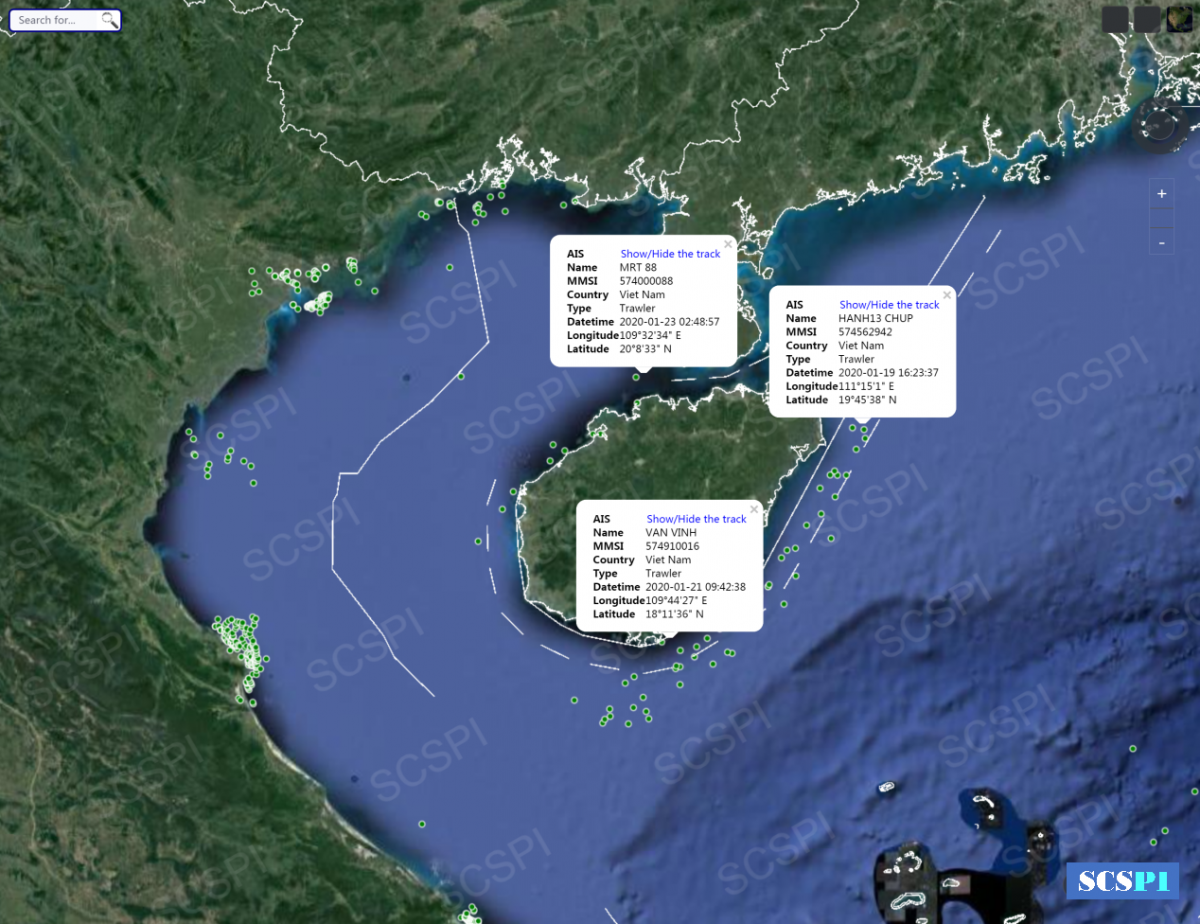
There is no doubt that these Vietnamese fishing vessels are seriously violating China’s sovereignty and maritime rights and interests. Even worse, their activities seem to be purposely organized, likely being indulged by the Vietnamese government and relevant institutions. Generally, such activities of the Vietnamese fishing vessels can bring risks in two aspects:
First of all, such Vietnamese fishing vessels are suspected to be engaged in illegal, unreported and unregulated (IUU) fishing which are banned by international laws. To tackle on IUU fishing, the Food and Agriculture Organization of the United Nations (FAO) adopted the International Plan of Action to Prevent, Deter and Eliminate Illegal, Unreported and Unregulated Fishing (IPOA-IUU) in 2001 and demanded all states and international fisheries management organizations to implement the IPOA-IUU for protecting fishery resources. International organizations, mainly FAO, also compiled and developed matching rules and systems to regulate and restrain rampant IUU fishing. According to existing rules, IUU fishing is normally identified in non-disputed waters. In contested waters, however, fishing rights are unclear due to overlapping claims. Therefore, there is yet any consensus concerning the identification of IUU fishing.
When focusing on the aforementioned waters of Hainan Island, it is easy to see that China and Vietnam have managed to set a clear boundary in the Beibu Gulf to the west of the Hainan Island. As far as the east of the Hainan Island is concerned, it is not involved in any disputes in any case according to broadly accepted principles of delimitation. Despite disputes between the two countries over territorial and maritime rights and interests in the South China Sea, the boundary is without any disputes regarding the waters near the Hainan Island, which is also fully recognised by Hanoi. The intruding Vietnamese fishing vessels should be identified as engaging in IUU fishing which severely violates China’s sovereignty and jurisdiction. Those fishing vessels which come into China’s internal waters and territorial seas are conducting violations in an even worse way. Currently, Vietnamese fishermen are fishing across the whole South China Sea resulting into the massive overcapacity in Vietnam’s fishery industry. Some of them might indeed come for fishing because of the rich fishery resources in waters of the Hainan Island.
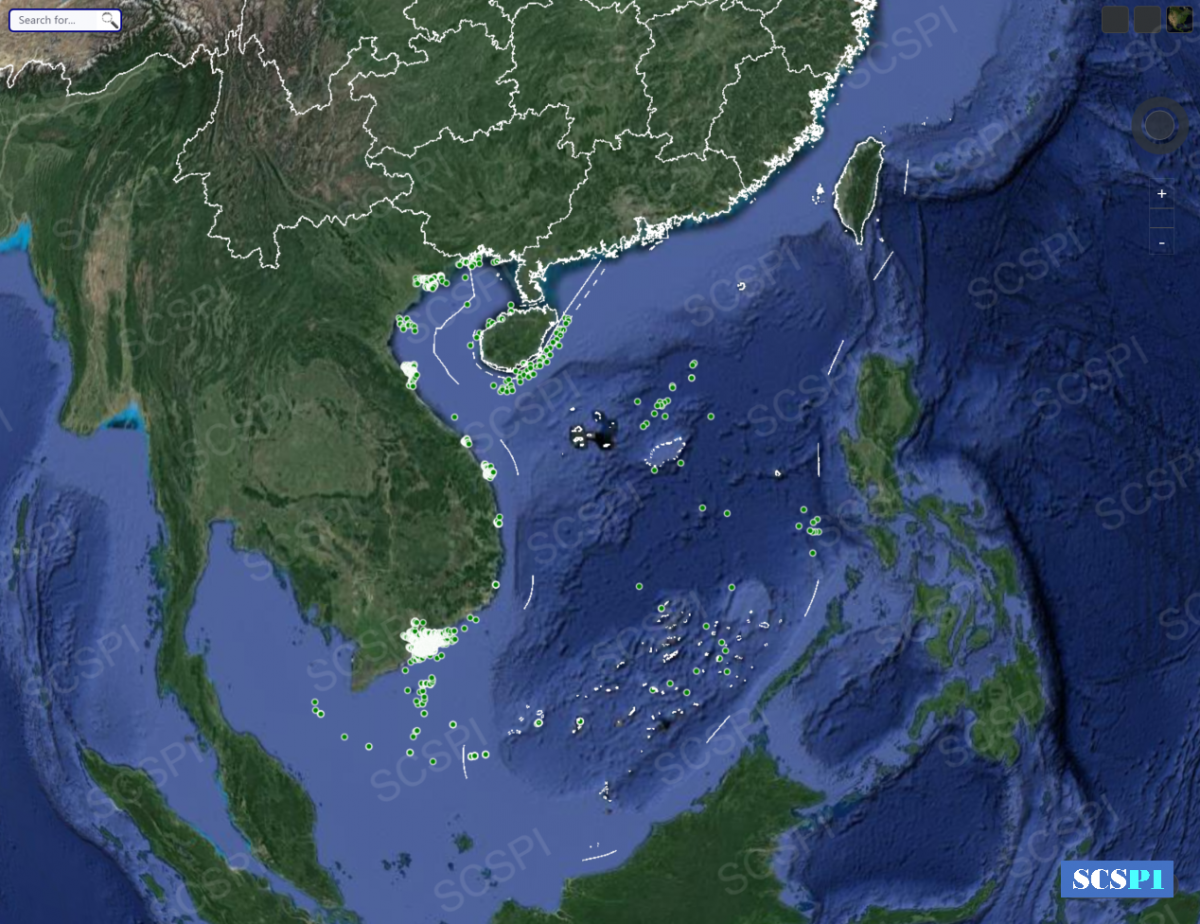
Moreover and more seriously, these Vietnamese fishing vessels may come to China’s waters for special missions instead of fishing. The distribution of Vietnamese fishing vessels around the Hainan Island is extremely strange for they usually gather in the southeast of the Island, especially those areas close to the coastline near Sanya City and Lingshui Li Autonomous County. As we all know, these areas are homes to several naval and air bases. Words have long circulated among Hainan locals that Vietnamese militia members are aboard such fishing vessels for reconnaissance of China’s military bases and warships while they enter and leave ports. Which is proved by our statistical data indirectly: If for IUU fishing purpose only, it would make no sense to gather disproportionately and economically for Vietnamese fishing vessels to seek far and neglect what lies close , while fishery resources are relatively equally distributed between the south and east of the Hainan Island.
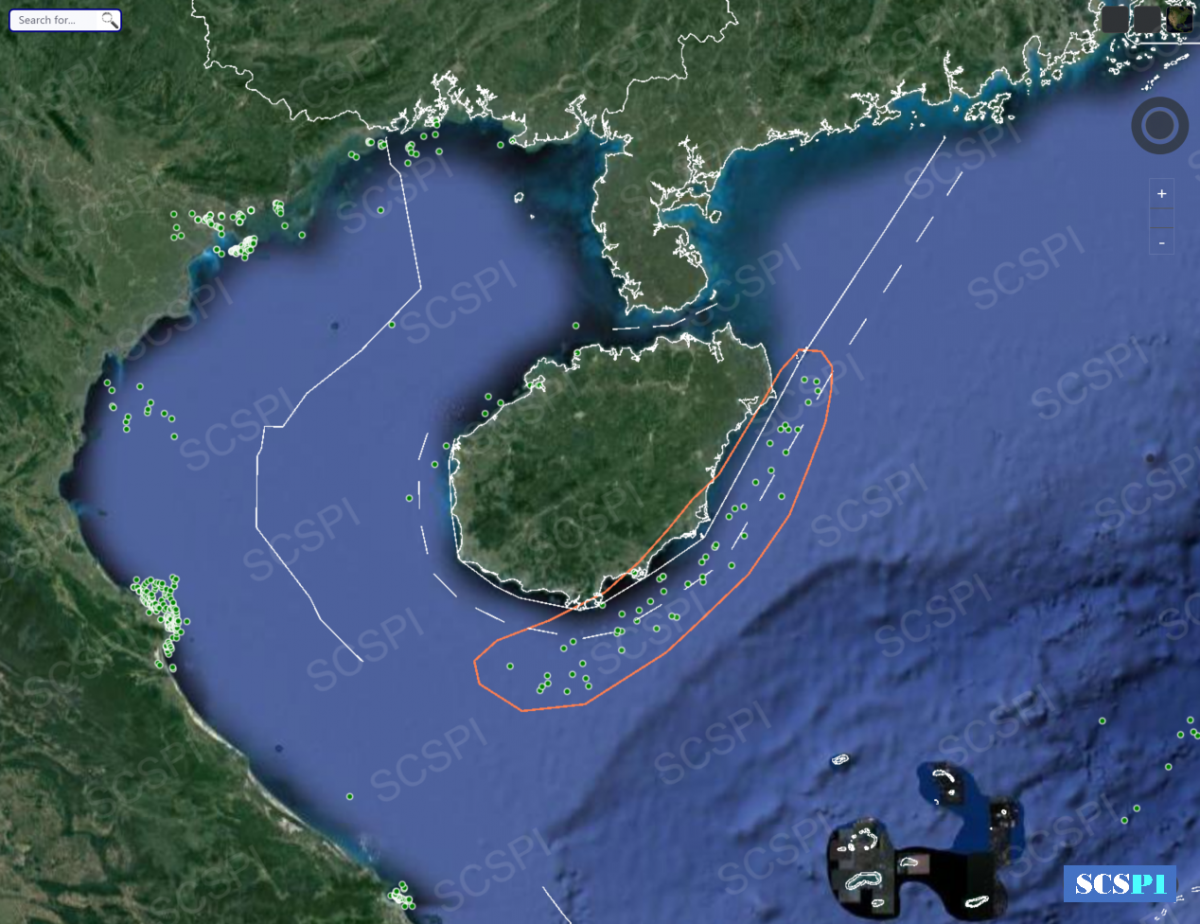
In September of 2019, some pictures online showing one Vietnamese fishing vessel’ s abnormally approaching to one Chinese Strategic Missile Nuclear Submarine in somewhere between Paracel Islands and Hainan, which are alleged to be taken by some Vietnamese fishing man.
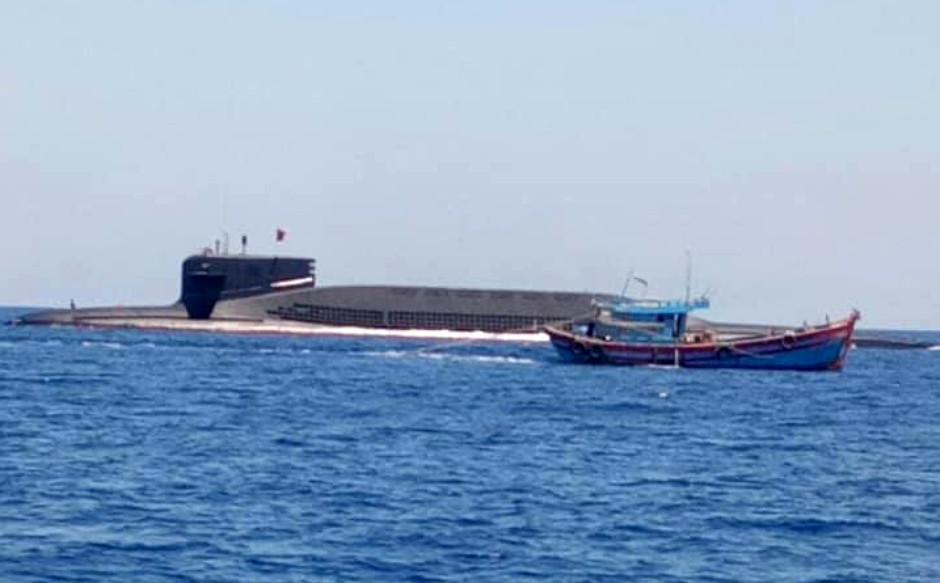
Photo credit: DuanDang, Source: www.hisutton.com/Cn_Type-094_Incident.html
As a great power, China does take more responsibilities for maintaining stability in the South China Sea. But this shall not be mistaken by other coastal states like Vietnam as their chances to act recklessly. Vietnam need give an appropriate and serious explanation to China and the international community for IUU fishing, or worse, the close-range reconnaissance by its fishing vessels in waters of the Hainan Island. It must practically take effective measures to regulate its fishing vessels to shoulder its responsibility as the country of registration.
Appendix
Detailed Information About Vietnamese Fishing Vessels’ Intruding Into Waters of Hainan Island from January 19 to 31, 2020
